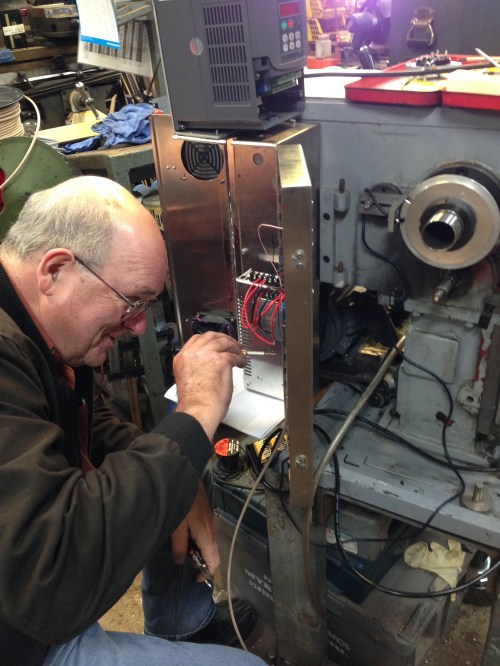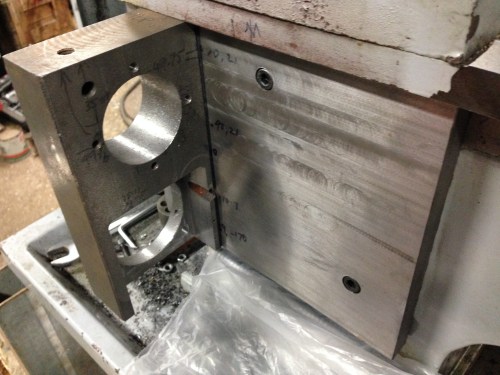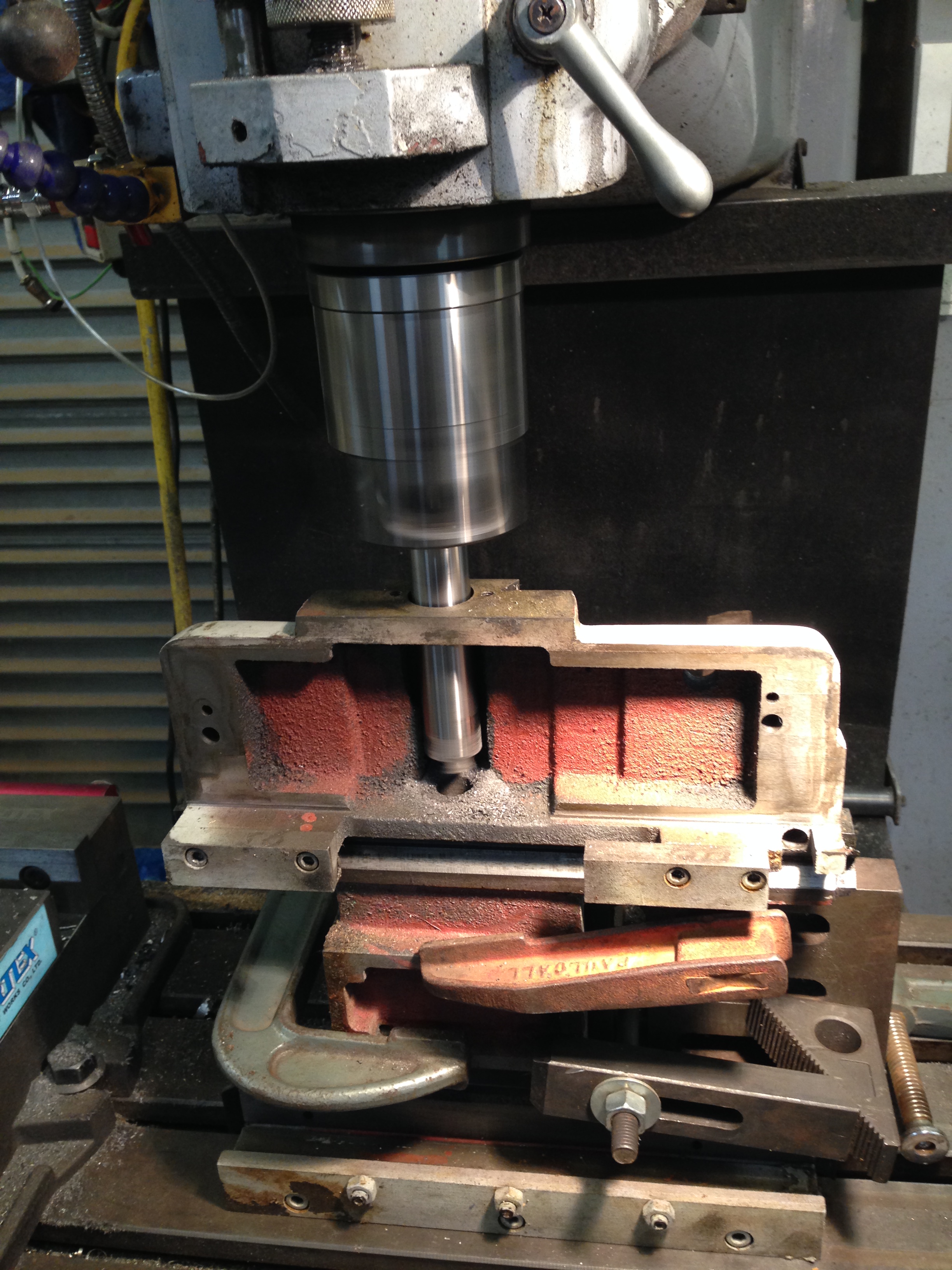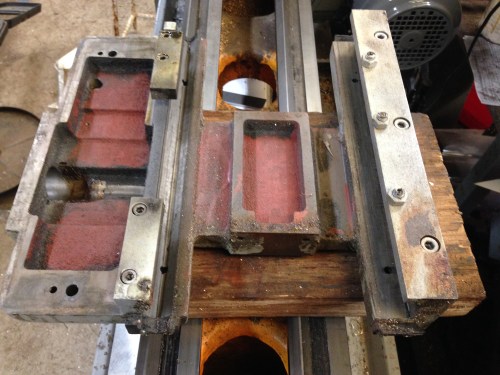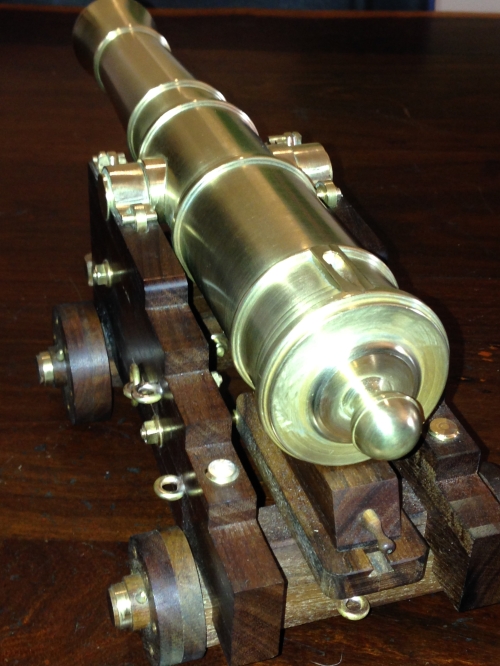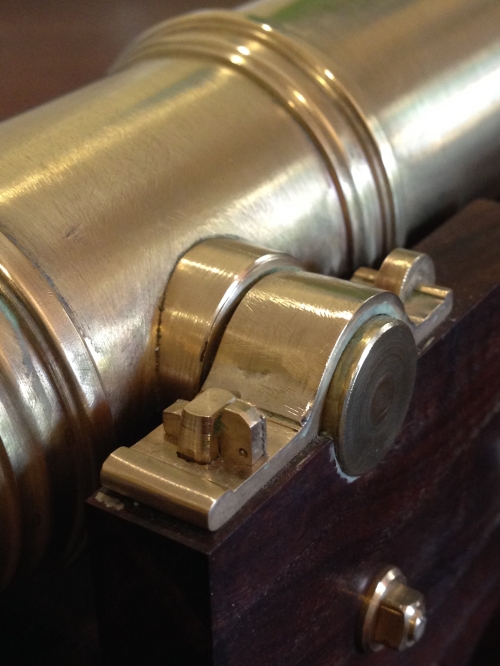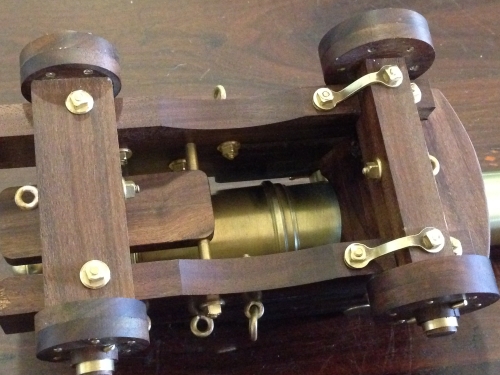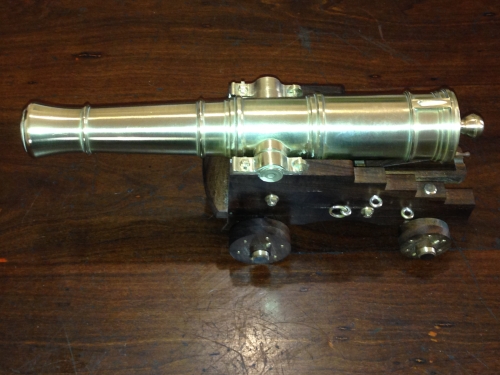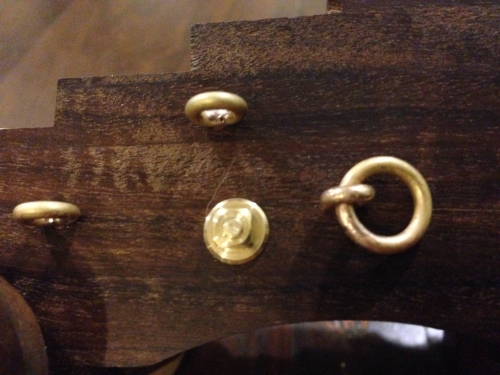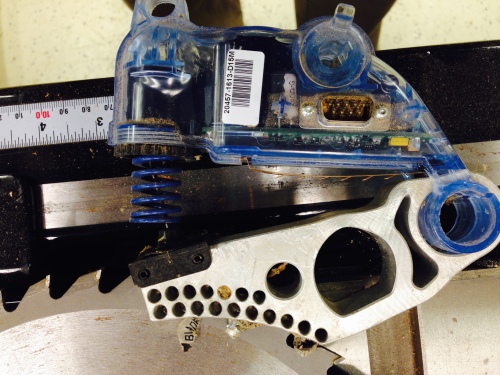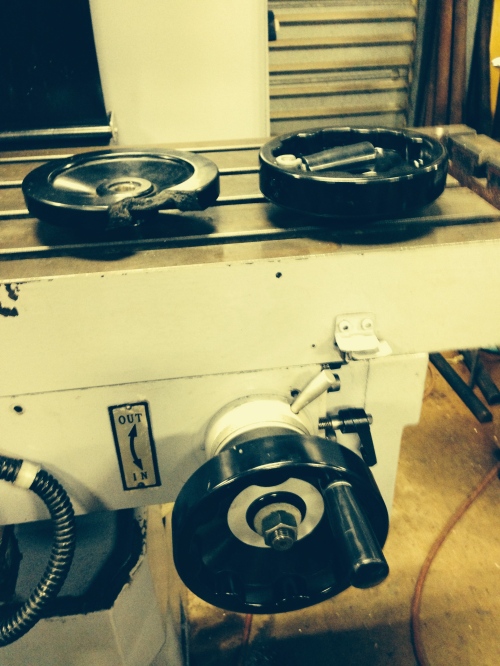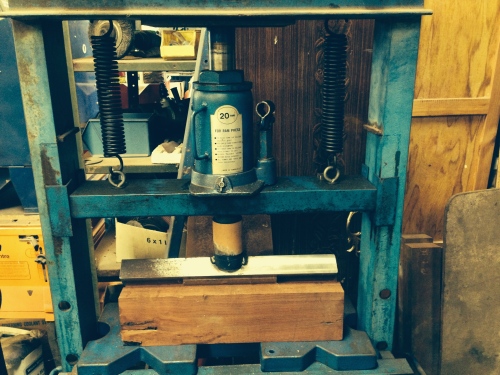Today I drove with a friend to Ballarat, Victoria, Australia to the biggest swap meet in the Southern hemisphere, maybe the biggest in the known universe.
It is located on an aerodrome in country Victoria. Approx 2500 stall holders selling stuff from shed cleanouts, factory close downs, farm sales, and some commercial sellers.
A lot of the stuff on sale seems to be total junk, with the vendors sitting around enjoying the sunshine, the conversations, the beer and barbeques. A lot of them stay in tents and caravans on site. But there are many gems and bargains, and that is the reason I find myself drawn back to the event, annually for the past 4 years.
The atmosphere and mood is relaxed and pleasant. A fair bit of good natured haggling and bargaining goes on.
You do have to keep an eye out for kids on bikes whizzing about. It is supposed to be a car free zone, but I noted far too many vehicles driving about raising dust. The organisers need to get on top of that issue.
I was also a bit peeved to have to pay $3:50 each for a small plastic bottle of water. It was a hot day, and several of these were required. The price was feasible because there were no other visible sources of drinking water.
But I was very happy with my purchases. Photos following.
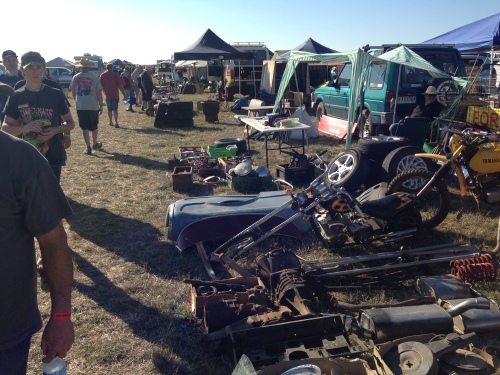
Hats, sunscreen, and fluids essential. 34 degrees C.
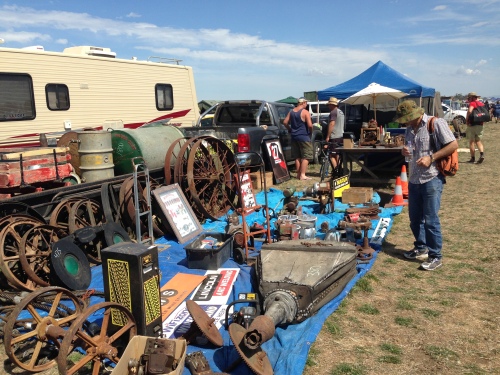
Amazing eclectic variety of stuff on sale.
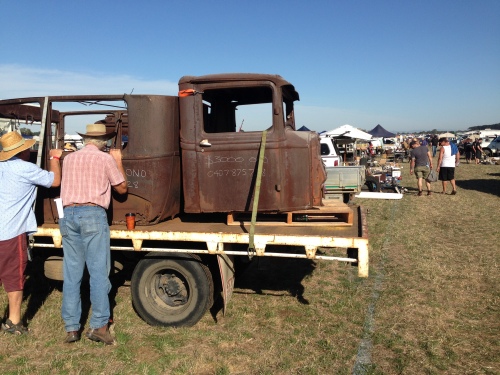
I estimate that I walked 10km checking out about 50% of the sites. Too many to see in one day.
SOME OF THE STUFF WHICH I BOUGHT. IT REFLECTS MY OWN INTERESTS RATHER THAN THE VARIETY OF ITEMS ON SALE. MY FRIEND BOUGHT A HEAP OF PARTS FOR HIS MINI MOKE. THAT IS HIS PARTICULAR INTEREST.
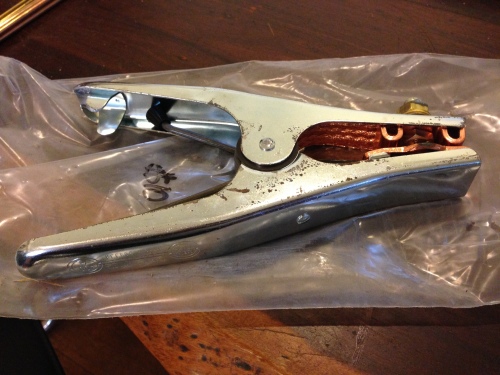
A heavy duty, well constructed welding earth clamp for $10.
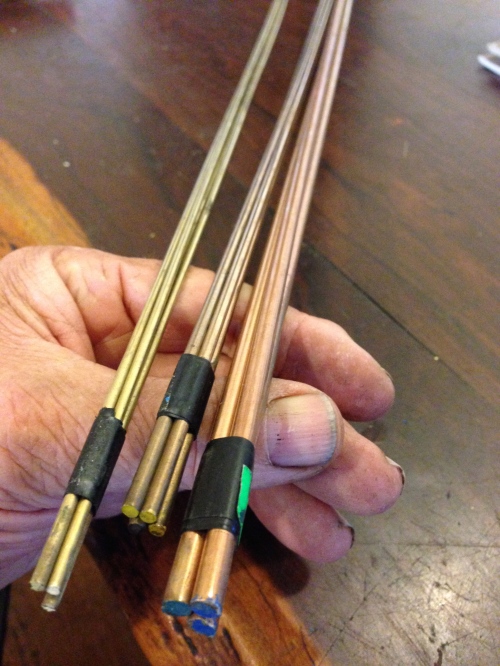
Some bronze manganese welding rods for $15. I will check their machineability.
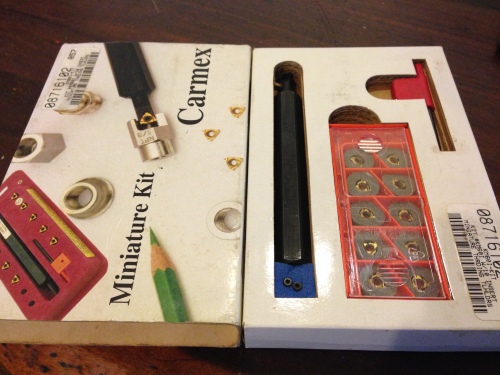
A miniature internal threading tool with inserts. Expensive at $130, but good value.
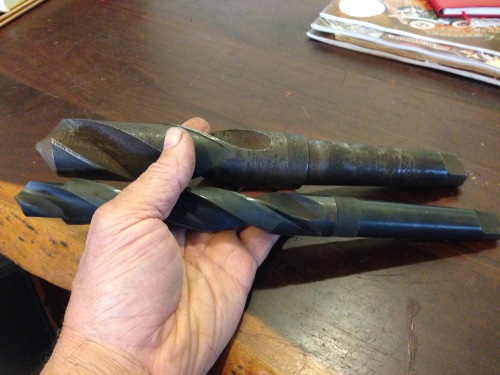
A 1″ m3 step drill (new), and a used but good condition 1.5″ M4 drill bit. $30 total. Great value.
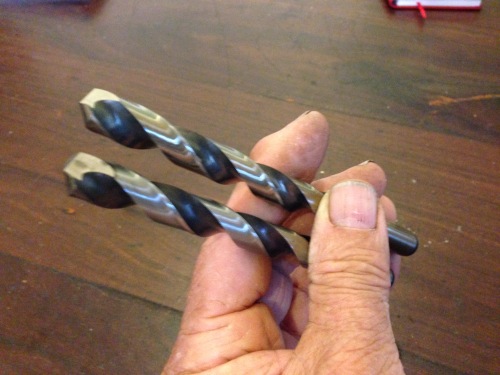
2 cobalt 9/16″ drill bits for $6. Only one size available. Amazing low price.
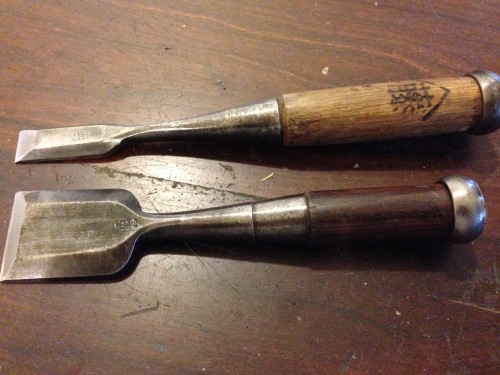
A pair of razor sharp Japanese wood chisels. Pricey at $70, but the conversation I had with the Japanese cabinet maker who was selling them, was priceless. The handles are rosewood and oak. The steel is laminated, similar to samurai swords. I look forward to trying these.
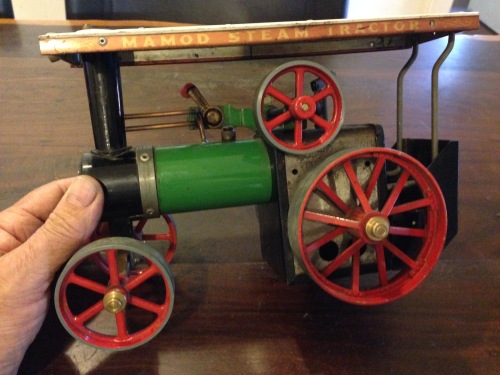
A Mamod steam tractor. It seems to be in reasonable condition, and complete. I told SWMBO that it is a present for a grandson when he is a bit older (2 years old now), but we will see. I really like it myself. Is 64 too old to be playing with toys? Was said to be in working condition, but I expect that some renovation will required. Price not for disclosure to SWMBO.
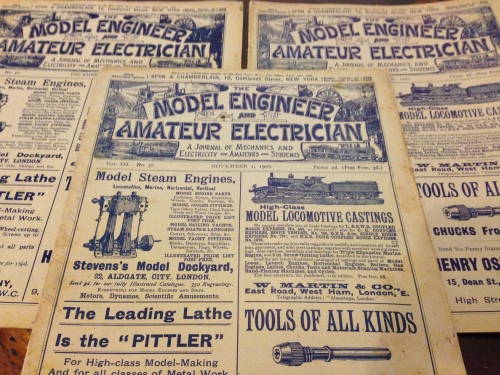
This was the most interesting purchase. 3 “Model Engineer and Amateur Electrician” magazines from Sep to Dec 1900. $5 each. The articles about “using electricity in the workshop” were sobering. It was nice to see articles about lathes apart from Myford discussed. (Drummond most common). Not sure where these magazines will end up. They should be on display, or in a museum.
